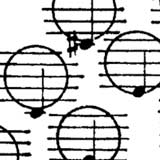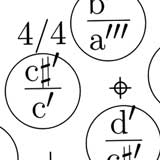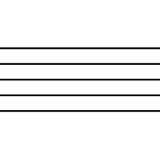 |
 |
|||||||
|
|
||||||||
| Zubehör & Teile accessoires & parts accesorios & piezas accessoires & pièces l´accessori & parti Grifftabellen keyboard layouts teclados clavier tastiere Lehrer teachers profesores professeurs insegnantes Bando-CDs CDs CDs CDs CDs Noten scores partituras partitions spartite |
 |
|
| Grifftabellen zum ausdrucken layoutsystems to print & download teclados para imprimir claviers pour imprimiée tastiere a stampare |
| 142 Töne Rheinisch / wechseltönig (sog. Argentinisch, Tango) 142 tones / diatonic / rheinisch disposition (argentine, Tango) 142 tonos / diatonico / rheinisch (Argentino, Tango) 142 tons / diatonico / rheinisch (Argentine, Tango) 142 tonos / diatonico / rheinisch (Argentino, Tango) |
||||||||
|
||||||||
| ... siehe auch Artikel "Die verschiedenen Knopfanordnungen" ... see also the article "the different keyboard layouts" |
|
empty music sheet paper as free download and print hoja de papel de música en blanco para descargar e imprimir gratis feuille de papier à musique vierge à télécharger et imprimer gratuitement foglio di carta da musica bianco per il download e la stampa gratuiti |
| 152 Töne Rheinisch / klassische Erweiterung 152 tones / historic extension 152 tonos / extensión histórico 152 tons / l´agrandedissement classique 152 tonos / estensione storico |
|||||||
| Das 142-tönige Bandoneon wurde bis ca. 1939 praktisch nur für den Export nach Südamerika gebaut. Ab Werk waren die uns gewohnten Töne E und F im Aufzug der linken Hand noch anders gestimmt. Auf dem Knopf 1/1 war ein Kontra A statt E und auf dem Knopf 6/0 ein Kontra G statt F. Diese wurden von jeher in Südamerika umgestimmt auf die uns bekannte "Rheinische" oder "Argentinische" Tonbelegung der linken Hand. Ebenfalls in der linken Hand ist der Knopf 13 im Zudruck manchmal mit einem a', meist jedoch mit einem h' belegt. Die Erweiterung auf 152-Töne gab es schon früh, vermutlich seit Anfang der 20er-Jahre. In der rechten Hand kamen zwei Knöpfe mit g und g# im Aufzug und Zudruck hinzu. In der linken Hand kamen drei Knöpfe hinzu, die unterschiedlich belegt wurden. Verschiedene Möglichkeiten der Knopfbelegung dieser erweiterten Tastatur sind möglich und frei wählbar. Siehe PDF "152 / Optionen". Das nachträgliche hinzubauen von Extratönen ist möglich, jedoch möchte ich abraten. Der Aufwand und der irreversible Eingriff und die Veränderungen in ein integres Instrument stehen in keinem Verhältnis zum Ergebnis, vor allem in Bezug auf Klang und Ansprache. |
|
||||||
| Nachträglich hinzugefügte Töne auf Einzeltonstimmplatten (vergleichbar im Akkordeon) fügen sich klanglich nicht befriedigend in die typische Klangcharakteristik der durchgehenden Stimmplatten des Bandoneons ein. In einem original 152-Tönigen Instrument sind die zusätzlichen Töne in der Mechanik und auf den Stimmplatten integral und erweitern das Instrument typisch und authentisch. Umbauten, also das Verändern oder Hinzufügen von anderen Tönen auf die bestehenden Originalplatten ist mit gutem Ergebnis möglich. So mache ich integrale Umbauten nach Kundenwunsch meist bei gleichtönigen Bandoneons (Peguri-System). ... siehe "Maxime" № 140829 ... siehe "AA / 152" № 130508 |
The 142-tone bandoneon was built in Germany until 1939, practically only for export to South America. The usual notes E and F in left hand opening were still in a different layout by the factory. On button 1/1 was a contra A instead of E and on button 6/0 a contra G instead of F. In Argentina, these notes have always been changed over to the familiar "Rhenish" or "Argentinian" layout of the left hand. Also in the left hand, the button 13 is in closing sometimes occupied by an a ', but usually with an b'. The extension to 152 tones exist probably since the early 20s. In the right hand, two buttons with g and g # came in equal in opening and closing. In the left hand, three buttons were added which were tuned in different ways. Different possibilities of this extended keyboard you can find on the referenced PDF "152 / options". The subsequent addind of extra notes is possible, but I do not recommend it. The effort and the irreversible intervention and the changes in an integral instrument are out of proportion to the result, especially in terms of sound and response. Subsequently added notes on single reedplates (comparable to the accordion) do not fit satisfactorily into the typical sound characteristic of the bandoneon's one piece solid reed plates. In an original 152-tone instrument, the additional notes in the mechanics and on the reed plates are integral and extend the instrument typically and authentically. Conversions, in terms of changing or adding other tones to the existing original reeddplates is possible with good results. So I do integral conversions according to customer requirements mostly on unisonor bandoneons (Peguri system). ... see "Maxime" № 140829 ... see "AA / 152" № 130508" |
 |
| © 1998-2023 BANDO BANDO Wuppertal | |
| Kontakt / Impressum Datenschutzhinweis & Hinweise zur Nutzung |




